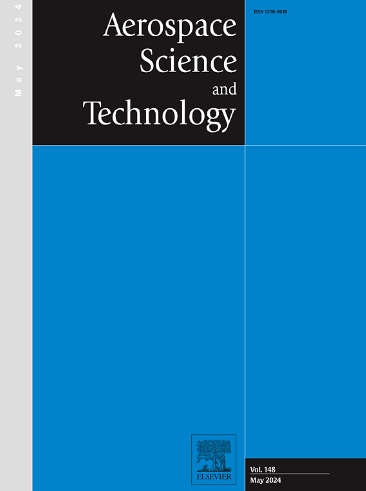Screech modes in underexpanded hot free jets
IF 5
1区 工程技术
Q1 ENGINEERING, AEROSPACE
引用次数: 0
Abstract
High-speed thermal jets are widely applied in aerospace and other engineering fields. Compared with cold jets, screech tones in hot jets have higher frequencies and lower intensities. However, there are fewer studies on the screech modes of hot jets. In this paper, large eddy simulations are carried out on underexpanded free jets with different nozzle temperature ratios (NTRs) and nozzle pressure ratios (NPRs). The time-averaged shock cells and screech frequencies obtained from numerical simulations agree with the corresponding experimental results well. The screech modes of the NPR=2.4 jets at various NTRs are compared and analyzed. It is found that the screech mode changes with the NTR, which is not accidental after testing hot jets at other NPRs. Via Spectral Proper Orthogonal Decomposition, the features of different screech modes are analyzed in detail. To explain the mode change, the acoustic feedback mechanism of screech tones is studied by combining the neutral acoustic mode and the interaction between the shock cells and the K-H wavepackets. For hot jets, the wavenumber criterion of acoustic resonance in axisymmetric screech mode cannot be satisfied. Thus, the screech tones in axisymmetric mode cannot exist stably in underexpanded jets with NPR = 2.4 at high NTRs.
求助全文
约1分钟内获得全文
求助全文
来源期刊

Aerospace Science and Technology
工程技术-工程:宇航
CiteScore
10.30
自引率
28.60%
发文量
654
审稿时长
54 days
期刊介绍:
Aerospace Science and Technology publishes articles of outstanding scientific quality. Each article is reviewed by two referees. The journal welcomes papers from a wide range of countries. This journal publishes original papers, review articles and short communications related to all fields of aerospace research, fundamental and applied, potential applications of which are clearly related to:
• The design and the manufacture of aircraft, helicopters, missiles, launchers and satellites
• The control of their environment
• The study of various systems they are involved in, as supports or as targets.
Authors are invited to submit papers on new advances in the following topics to aerospace applications:
• Fluid dynamics
• Energetics and propulsion
• Materials and structures
• Flight mechanics
• Navigation, guidance and control
• Acoustics
• Optics
• Electromagnetism and radar
• Signal and image processing
• Information processing
• Data fusion
• Decision aid
• Human behaviour
• Robotics and intelligent systems
• Complex system engineering.
Etc.
 求助内容:
求助内容: 应助结果提醒方式:
应助结果提醒方式:


